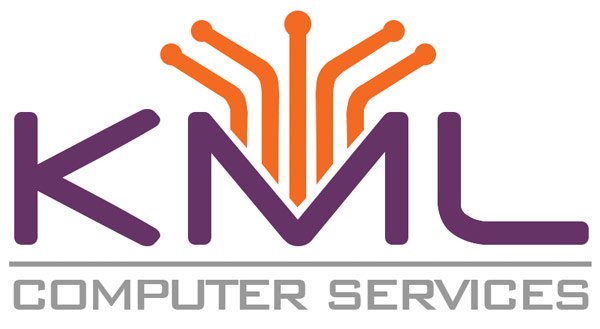
The Critical Failure Points of Traditional VPNs
Overwhelming Vulnerability Landscape
The vulnerability crisis affecting traditional VPN infrastructure has reached alarming proportions. Recent research reveals a 47% increase in VPN vulnerabilities discovered in 2023 compared to 2022, highlighting the accelerating risks associated with these essential tools. This surge in vulnerabilities has created an unprecedented attack surface that cybercriminals are actively exploiting.
Attack surface: all the different points where an attacker could try to enter or extract data from your systems – like public IP addresses, connected apps, and remote devices. The more of these you have, the more exposed you become.
State-Sponsored Exploitation Campaigns
Advanced Persistent Threat (APT) groups have systematically targeted VPN infrastructure with devastating effectiveness. State-sponsored actors, particularly Chinese groups, have exploited VPN vulnerabilities to deploy custom malware on over 20,000 devices worldwide, including critical infrastructure such as government and military networks.
The exploitation techniques have become increasingly sophisticated. Multiple Nation State APT actors have weaponized critical vulnerabilities to gain access to vulnerable VPN devices across many platforms. These attacks frequently utilize zero-day vulnerabilities or recently disclosed flaws that haven’t been patched, allowing attackers to retrieve authentication credentials and establish persistent access.
Inherent Protocol Weaknesses
Traditional VPN protocols suffer from fundamental security flaws that compromise their effectiveness. Several VPN protocols have been widely criticized for their susceptibility to brute force attacks through their weak authentication protocols. Even the more robust protocols can suffer from complex implementations that often lead to configuration errors that lead to unintended vulnerabilities.
Performance and Scalability Limitations
Traditional VPNs face significant performance challenges that make them inadequate for modern enterprise requirements. These systems suffer from pronounced latency, repeated user authentications, and complex routing mechanisms. The encryption and decryption processes required for VPN traffic are resource intensive and can rapidly exhaust the CPU resources of firewalls.
Organizations dealing with remote workforces have discovered that traditional firewalls simply cannot scale across multiple applications, placing additional burden IT resources.
The Firewall Security Crisis
Fundamental Architectural Limitations
Traditional firewalls operate on perimeter-based security models that are fundamentally misaligned with modern distributed network architecture. Hardware firewalls effectively monitor and filter traffic passing through them, but they cannot see what’s happening on remote worker home networks, creating significant blind spots in security coverage. This limited visibility into remote networks makes it difficult to detect and prevent threats that might originate from remote worker devices or environments.
Configuration and Management Complexity
Firewall management has become increasingly complex, with misconfiguration issues emerging as the most significant concern. Most firewall breaches are caused by misconfigurations rather than inherent firewall weaknesses. The complexity of rule management is especially problematic as organizations grow, and the number of firewall rules increases exponentially.
The Equifax breach exemplifies these challenges, where cybercriminals exploited firewall security vulnerabilities to access sensitive data of 143 million customers, costing the company over $425 million in damages.
Advanced Evasion Techniques
Sophisticated attackers have developed numerous techniques to bypass firewall protections. Advanced Evasion Techniques (AETs) combine multiple simple evasion methods to circumvent standard security tools, including IP spoofing to manipulate source addresses.
Encryption Inspection Challenges
Firewalls struggle with the increasing prevalence of encrypted traffic. Today’s encryption protocols make it difficult for traditional firewalls to inspect packets for malicious payloads. Many enterprise firewalls lack robust decryption capabilities due to the high overhead involved.
What can be Done: The Zero Trust Revolution
A Paradigm Shift: Understanding Zero Trust Network Access (ZTNA)
Zero Trust Network Access represents a fundamental shift from perimeter-based security to a model where no network traffic is automatically trusted, even within supposedly secure network segments. ZTNA solutions create identity-and context-based boundaries around network assets, hiding network information and restricting access based on continuous verification. The core philosophy of zero trust assumes that some degree of compromise will occur, so no system, user, or asset should be implicitly trusted. This mindset helps limit breach damage by reducing detection, response, and mitigation timelines while preventing lateral movement within networks.
Key Components and Benefits
ZTNA solutions provide several critical capabilities that address traditional VPN and firewall limitations:
- Application Micro-segmentation: ZTNA creates granular security boundaries around individual applications or application groups, preventing unauthorized lateral movement. This approach provides more precise control than network-level segmentation and adapts dynamically to changing application requirements.
- Continuous Verification: Unlike traditional VPNs that grant network access after initial authentication, ZTNA continuously monitors user and device behavior, adjusting access privileges based on real-time risk assessment. This ongoing verification helps segment networks and prevents attacks from spreading laterally throughout the infrastructure.
- Identity-Based Access Control: ZTNA solutions authenticate both user identity and device posture before granting access to specific applications. This dual verification ensures that only authorized users on compliant devices can access corporate resources, significantly reducing the attack surface.
Implementation Challenges and Solutions
Despite its benefits, zero trust implementation faces significant obstacles. Research indicates that many cite the complexity of implementation as the biggest hurdle. The need to redesign network architecture, implement strict access controls, and continuously monitor access can seem daunting. A phased approach beginning with pilot implementations and gradually expanding to enterprise-wide deployment has proven most effective at mitigating these challenges.
Software-Defined Perimeter (SDP): Creating Digital Fortresses
SDP Architecture and Principles
Software-Defined Perimeter represents an innovative approach to network security that creates virtual boundaries around networked resources based on identity verification. SDP establishes perimeters via software rather than hardware, enabling organizations to hide infrastructure from outsiders regardless of location. The approach follows a need-to-know model where both device posture and identity are verified before granting access to application infrastructure.
Operational Advantages
SDP provides several key benefits over traditional perimeter security:
Infrastructure Invisibility:
SDP creates a “black cloud” that obscures systems by cloaking them within the perimeter, preventing external reconnaissance and reducing the attack surface available to threat actors.
Dynamic Policy Enforcement:
Unlike static firewall rules, SDP enables dynamic security policies that adapt to changing network conditions and application requirements. This flexibility ensures security controls remain effective as business needs evolve.
Simplified Administration:
SDP decouples security policy enforcement from physical infrastructure, simplifying administration and enabling more granular control without requiring network rearchitecting. This approach reduces implementation time, complexity, and costs compared to traditional network segmentation.
Secure Access Service Edge (SASE): The Convergence Solution
SASE Architecture Overview
Secure Access Service Edge combines comprehensive network capabilities with cloud-delivered security services such as Secure Web Gateway (SWG), Cloud Access Security Broker (CASB), and Zero Trust Network Access (ZTNA). This cloud-native framework integrates multiple networking and security functions to handle external traffic demands while providing consistent policy enforcement.
SASE addresses the limitations of traditional security architecture by directing traffic to nearby points of presence rather than routing everything through centralized data centers. This improves scalability and speeds network response times while ensuring secure access to corporate resources regardless of user location.
SASE Provides Strategic Benefits for Modern Enterprises
Unified Management: SASE eliminates the complexity of managing multiple disparate products by providing a single pane of glass for network and security solution monitoring and management. This consolidation reduces operational overhead and improves security visibility.
Global Performance Optimization: SASE leverages distributed cloud nodes to minimize latency and optimize performance, providing secure access from any location. Centralized policy management ensures consistent security and access policies across all users and devices.
Real-time Threat Intelligence: SASE integrates threat intelligence to proactively identify and respond to potential threats, dynamically adjusting security posture to stay ahead of evolving threats. Advanced analytics and machine learning enable anomaly detection in user behavior and network traffic.
Solutions for Different Business Sizes
Small Business Solutions
Small businesses face unique challenges in implementing modern security solutions, balancing limited budgets with growing security requirements. ZTNA solutions typically cost $150 to $200 annually per user plus setup costs, making them accessible for smaller organizations. However, many small businesses can leverage cost-effective alternatives.
Cloud-Based ZTNA Services: Solutions like Cloudflare Zero Trust provide robust capabilities for up to 50 users at no cost, making it an attractive option for small businesses with basic security needs. Twingate offers specialized ZTNA capabilities starting at $5 per user per month, providing enterprise-grade security at small business prices.
Simplified VPN Alternatives: For small businesses transitioning away from traditional VPNs, solutions like Tailscale provide mesh networking capabilities that eliminate many traditional VPN limitations while remaining cost- effective. NordLayer offers business-focused VPN capabilities with zero-trust approaches starting at $8 per user per month.
Medium Business Implementation
Medium-sized businesses require more sophisticated security architecture while maintaining operational efficiency. The recommended approach involves layered protection with minimum costs of $2,000 to $3,000 annually per user and $10,000 to $20,000 per server for comprehensive cybersecurity frameworks.
Integrated SASE Solutions: Medium businesses should consider SASE platforms that combine SD-WAN and security services. Forcepoint One and Cloudflare SASE Platform provide comprehensive capabilities with centralized management suitable for growing organizations.
Phased ZTNA Deployment: Medium businesses benefit from structured ZTNA implementation beginning with high-risk applications and technology-savvy users before expanding enterprise-wide. This approach reduces complexity while building internal expertise and user acceptance.
Enterprise Solutions
Large enterprises require comprehensive security transformations addressing complex, distributed infrastructures. Enterprise ZTNA implementations typically involve $300,000 to $800,000 implementation costs across 12 to 18 months, with 89% of organizations achieving positive ROI.
Comprehensive SASE Architecture: Enterprise organizations should implement full SASE architecture combining multiple security functions with advanced SD-WAN capabilities. Solutions like Palo Alto Prisma Access and Zscaler Private Access provide enterprise-scale capabilities with a global presence.
Multi-Vendor Integration: Large enterprises often require best-of-breed solutions from multiple vendors rather than single-vendor approaches. Many organizations consider best-of-breed solutions most important for successful zero trust strategies, implementing integrated ecosystems from one to three vendors.
Implementation Roadmap and Best Practices
Phase 1: Assessment and Planning
Organizations should begin with comprehensive discovery and assessment activities:
- Asset Inventory: Document all applications, access requirements, and current security gaps
- Risk Assessment: Identify high-risk applications and user groups requiring immediate attention
- Baseline Metrics: Establish success measurements for security improvement and user experience
Phase 2: Pilot Implementation
Successful implementations begin with carefully selected pilot programs:
- Technology-Savvy Users: Select technically proficient users from different departments for initial deployment
- High-Value Applications: Focus on business-critical applications with clear security benefits
- Parallel Operation: Implement new solutions alongside existing access methods before complete cutover
Phase 3: Gradual Expansion
Expand implementation based on pilot results and lessons learned:
- BYOD and Contractor Access: Extend ZTNA to bring-your-own-device scenarios and external workforce
- Advanced Policy Controls: Implement more granular, context-aware security policies
- Integration Enhancement: Connect with additional security tools and analytics platforms
Phase 4: Enterprise-Wide Deployment
Complete the transformation into modern security architecture:
- Comprehensive Coverage: Deploy ZTNA across all user groups and applications
- Legacy System Migration: Systematically replace traditional VPN and firewall-dependent access methods
- Continuous Optimization: Establish ongoing improvement processes and threat intelligence integration
Why Zero Trust Is No Longer Optional
The cybersecurity landscape has fundamentally shifted, rendering traditional VPNs and firewalls inadequate for modern enterprise security requirements. The combination of increasing vulnerability exploitation, sophisticated attack techniques, and evolving business needs demands a comprehensive transformation to zero trust architectures.
Organizations of all sizes must recognize that experiencing a breach is no longer a matter of if, but when. With the average cost of data breaches reaching $4.88 million, investment in modern security architecture becomes not just strategic but essential for business survival.
The path forward involves embracing Zero Trust Network Access, Software-Defined Perimeter, and Secure Access Service Edge solutions tailored to organizational size and requirements. While implementation challenges exist, particularly around complexity and expertise gaps, the structured approaches outlined in this analysis provide clear roadmaps for successful transformation.
The future of network security lies in identity-centric, continuously verified,and contextually aware architectures that assume compromise and limit damage. Organizations that proactively adopt this modern security paradigm will be better positioned to protect their assets, maintain business continuity, and thrive in an increasingly hostile cyber environment.
Take the Next Step Toward Zero Trust Security
Protecting your organization starts with the right strategy and the right partner. KML Computer Services can help you assess your current infrastructure, identify vulnerabilities, and implement a tailored Zero Trust architecture that meets your unique business needs.
Contact us today to schedule a consultation and begin building a stronger, more resilient security posture.
Mark Rossi is president of KML Computer Services. Since 1996 he has been immersed in the technology field, working in various positions, from hardware technician and network manager to network engineer and IT consultant.

